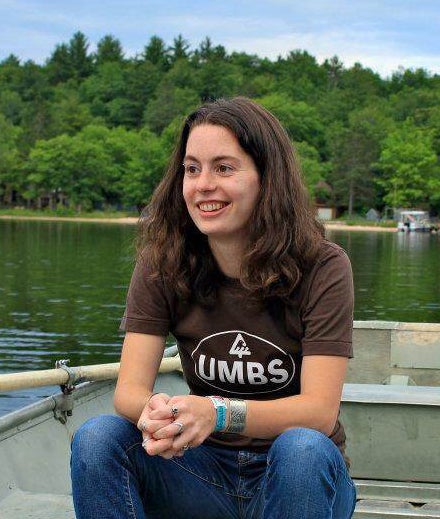
Mackenzie Caple
Project Coordinator
Academic Background
Univeristy of Michigan B.S. (Plant Biology/Chinese Studies)
Research

Paul Berry
Primary Investigator
Academic Background
B.S. Biology from Haverford College
M.A. and Ph.D. in Biology from Washington University in St. Louis
Research
My research interests are in plant systematics, including floristics, molecular phylogenetics, phytogeography, and bioinformatics. My work has mainly focused on the Neotropics, particularly the Guayana Shield, the Andes, and Brazil, as well as the upper midwestern United States. Plant groups of special interest are Euphorbiaceae (Euphorbia and Croton), Fuchsia (Onagraceae), and Rapateaceae. I am particularly interested in the study of "giant genera," those that are considered to contain over 500 species and have often been avoided because of their complex taxonomy, geography, and large numbers.
My newest research project stems from my interest in Euphorbiaceae, giant genera, and international collaborations. I am the principal investigator on a new National Science Foundation award in the "PBI" program (Planetary Biodiversity Inventories). The project is called "EuphORBia: a global inventory of the spurges," and it aims to produce a worldwide virtual monograph of the genus by the end of 2012, using modern bioinformatic tools, traditional field work and taxonomy, molecular phylogenetics, and floral developmental studies. Euphorbia contains over 2000 species and is distributed worldwide, but is most prominent in Africa, where many cactus-like succulents have evolved. We wish to make this a highly collaborative project, with training of students, postdocs, and participation of colleagues on all the vegetated continents.
U.S.-based or international students interested in joining the lab for Ph.D. studies on different aspects of the systematics of Euphorbia are encouraged to contact Professor Berry and apply to the Department of Ecology and Evolutionary Biology graduate program at the University of Michigan.
[bio from MICH]

Diarmaid Ó Foighil
Primary Investigator
Field of Study
Invertebrate evolution and systematics, malacology
Adademic Background
Diarmaid Ó Foighil obtained a B.Sc. (hons) in zoology from NUI Galway (Ireland) in 1981 and a Ph.D. in biology from the University of Victoria (Canada) in 1987. He was a postdoctoral fellow at the Friday Harbor Laboratories (University of Washington); Simon Fraser University (Vancouver, B.C.); and a research scientist at the University of South Carolina prior to joining the faculty at the University of Michigan in 1995. He has served as the president of the American Malacological Society and on the editorial boards of Evolution and Malacologia.
Research Interests
It is an exciting time to be a biologist. Ongoing theoretical and technical advances across broad areas of biological research are greatly expanding the scope of investigation for evolutionary studies and numerous classic questions concerning the origin and maintenance of biotic diversity are now being meaningfully tested for the first time.
The Mollusca are enormously diverse, have an excellent fossil record, and play central roles in almost all of the earth’s ecosystems. As a result, outstanding exemplar molluscan taxa can be targeted for most primary questions in the overlapping disciplines of evolution, systematics and biogeography. Although my background has been in marine systems, since moving to Ann Arbor I have also become very interested in freshwater and terrestrial taxa and presently have research projects on marine, terrestrial and freshwater taxa. See below a brief summary of our ongoing research project on endangered Pacific Island land snails.
Historical Phylogeny of Tahitian Partula, an Almost Extirpated Land Snail Fauna
NSF DEB-0425984
Partula hyalina and P. clara show enhanced resistance to the introduced predator Euglandina. Our results suggest that these two nominal Partula species represent a single polymorphic lineage stemming from a distinct Tahitian colonization event.
Jack Burch, Taehwan Lee and I are presently engaged in collaborative project with the Zoological Society of London on the conservation biology and systematics of this highly endangered malacofauna.
Thanks to Jack’s historical samples, we aim to reconstruct the evolutionary history of this fauna and provide a phylogenetic perspective to guide ongoing conservation efforts. See the popular Whyfiles article on this research.
[bio from UMMZ]

Daniel Fisher
Primary Investigator
-
Fields of Study
- Paleobiology
- Taphonomy
- Phylogenetic Inference
-
About
Professor Fisher's current research focuses on the paleobiology and extinction of mastodons and mammoths, elucidated by studies of growth increments and compositional (isotopic and elemental) time series sampled from their tusks and cheek teeth. Fieldwork associated with these projects involves many Pleistocene proboscidean sites in North America (especially the Great Lakes region) and in Siberia. North American occurrences include well preserved mastodon and mammoth skeletons, some showing evidence of human association (hunting, carcass processing). Siberian occurrences include permafrost-derived carcasses with extensive soft-tissue preservation, representing mammoths and other elements of the Mammoth Steppe fauna. Investigations of how teeth record details of animal physiology and life history are supported by studies of tooth formation processes in humans and other mammals. Additional projects have explored use of stratigraphic data in phylogenetic inference; digestive physiology of crocodilians; modes of growth of receptaculitid algae; comparative anatomy, skeletal crystallography, and phylogeny of stylophoran echinoderms; and functional morphology, phylogeny, and macroevolutionary patterns of horseshoe crabs.
-
Education
- Ph.D. Geology, Harvard, 1975
[bio from UMMP]

